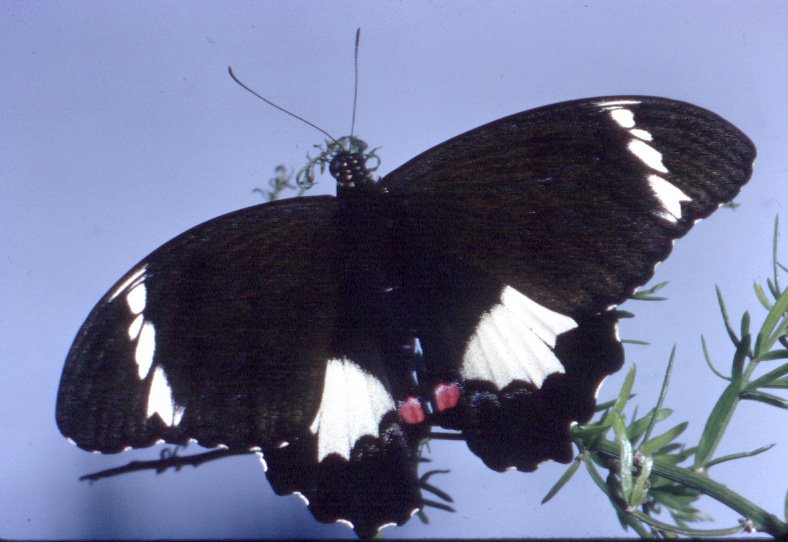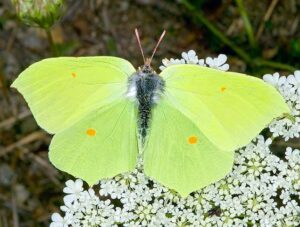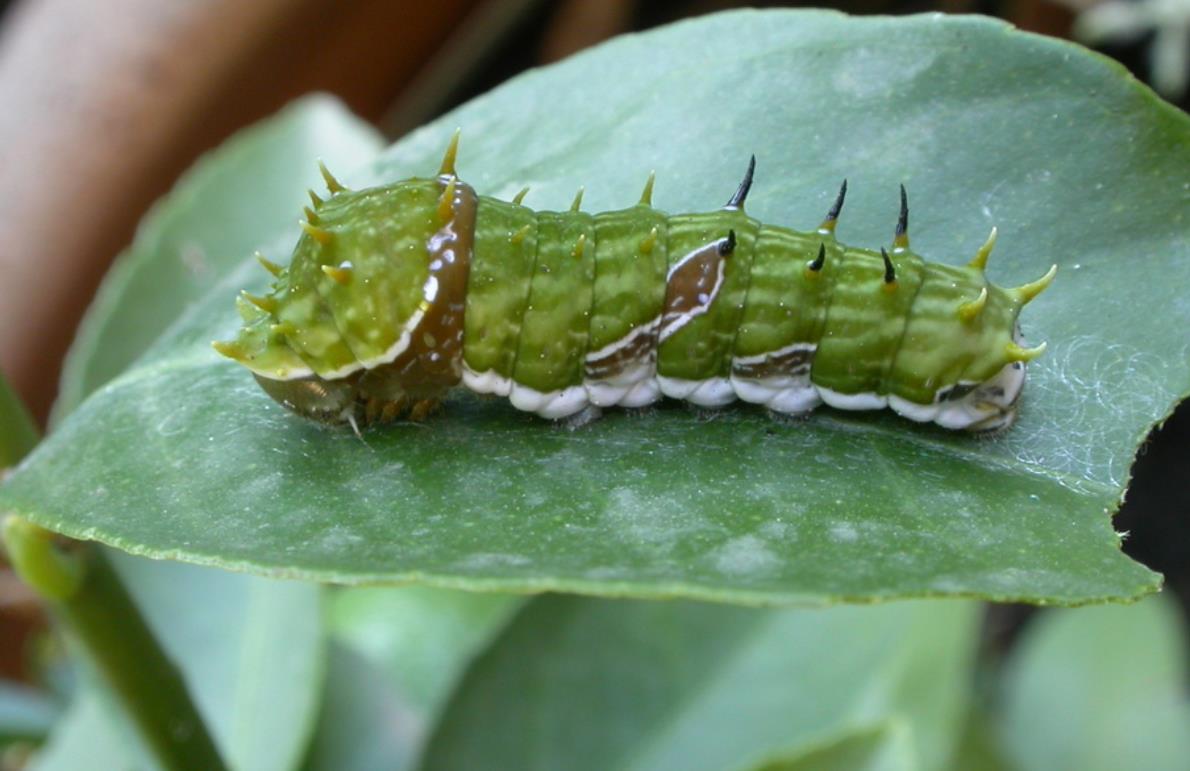
Orchard Swallowtail
The Orchard Swallowtail, Dingy or Dainty Swallowtail Butterfly: caterpillar is smaller (about 3.5 cm long) and dark green to black with yellow and white spots. The butterfly is also smaller (60mm wingspan) with creamy-grey patches over its entire black forewing, and creamy-white, red and blue patches on its hindwing.
Did you know?
Males can be territorial and will chase anything black and white that enters their territory, including Magpies!
Size
Caterpillar up to 6 cm long; Butterflies 10 – 12 cm wingspan.
Behaviour
Diet
The caterpillar eats the leaves of many plants, particularly citrus and native species from the Family Rutaceae; it prefers to eat young leaves but large caterpillars will eat older leaves. The butterfly feeds on nectar from a variety of plants, particularly lantana.
Movement
If disturbed, a caterpillar will reveal a red-orange “tentacle” (known as the osmeterium) from behind its head which emits a foul smell to deter predators.
Flight
Generally slow and erratic unless disturbed, and females fly more slowly during the egg-laying period. The males tend to “patrol” flight paths.
Breeding
Females lay eggs on the underside of host leaves, and the eggs hatch one week later.
The caterpillar (larva) is initially green, white and brown and resembles bird droppings. A mature caterpillar has a dark brown head, a green body with some pale yellow and brown markings, and spines along its back.
The male butterfly (adult) is black with an arc of creamy-white spots near the tip of each forewing. Each hindwing has a creamy-white patch and a single red spot, and there are many red crescents on its underside.
The female butterfly is brown to black, and the outer half of its forewing is whitish-grey. Its hindwing has a creamy-white patch, as well as a series of blue and red crescent-shaped markings.
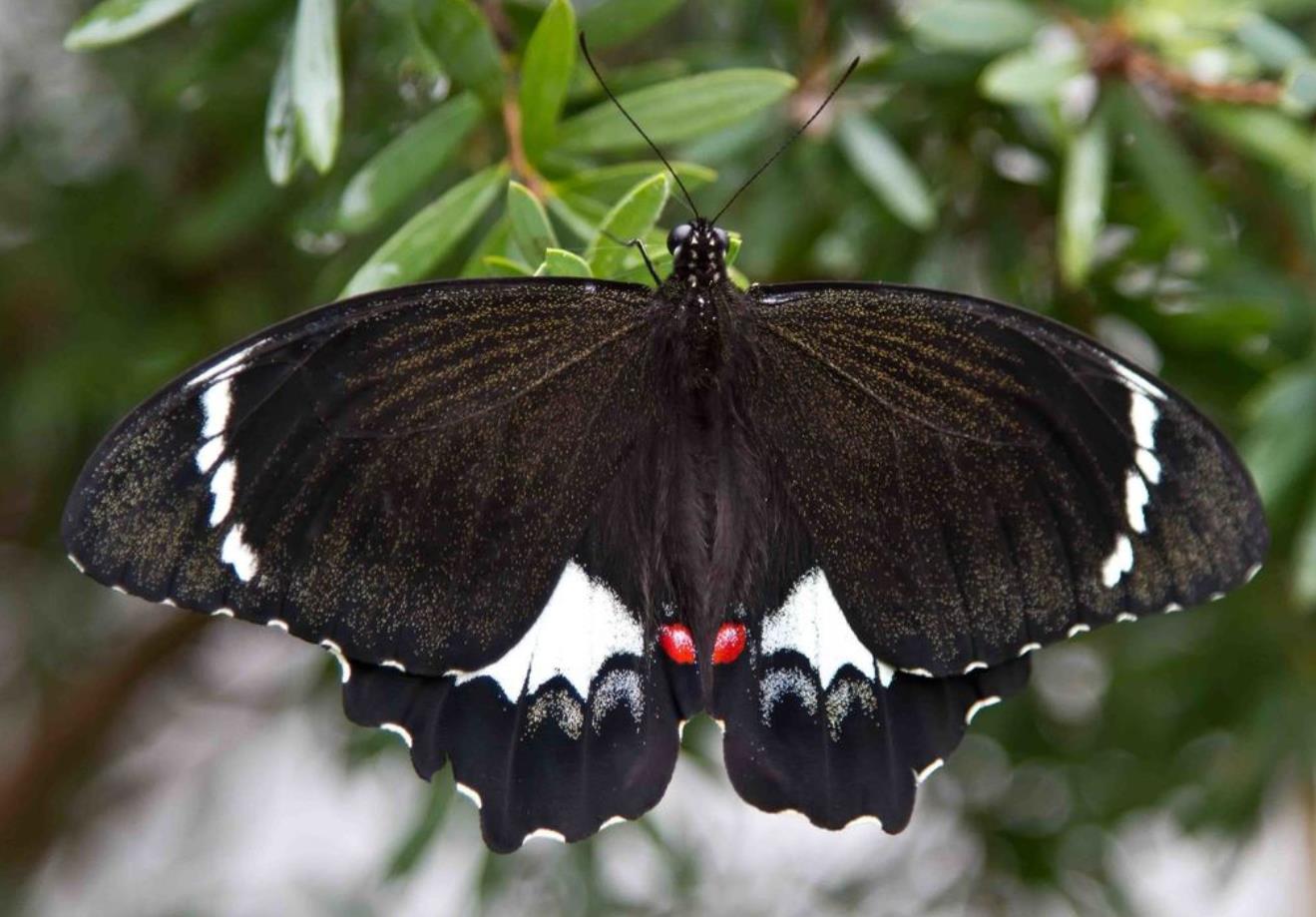
Both male and female have black forewings with a white stripe, though there is more white overall on the female forewing. The hindwing is again black, and there is a white swath through the middle. Here the markings differ in that the female has chains of red to orange and blue crescents toward the edge. The markings on the underside are similar to those on top. The body is black.The wingspan is about 140 millimetres (5.5 in) in females and 120 millimetres (4.7 in) in males, making it rather large overall and the largest butterfly commonly seen in at least part of its range.
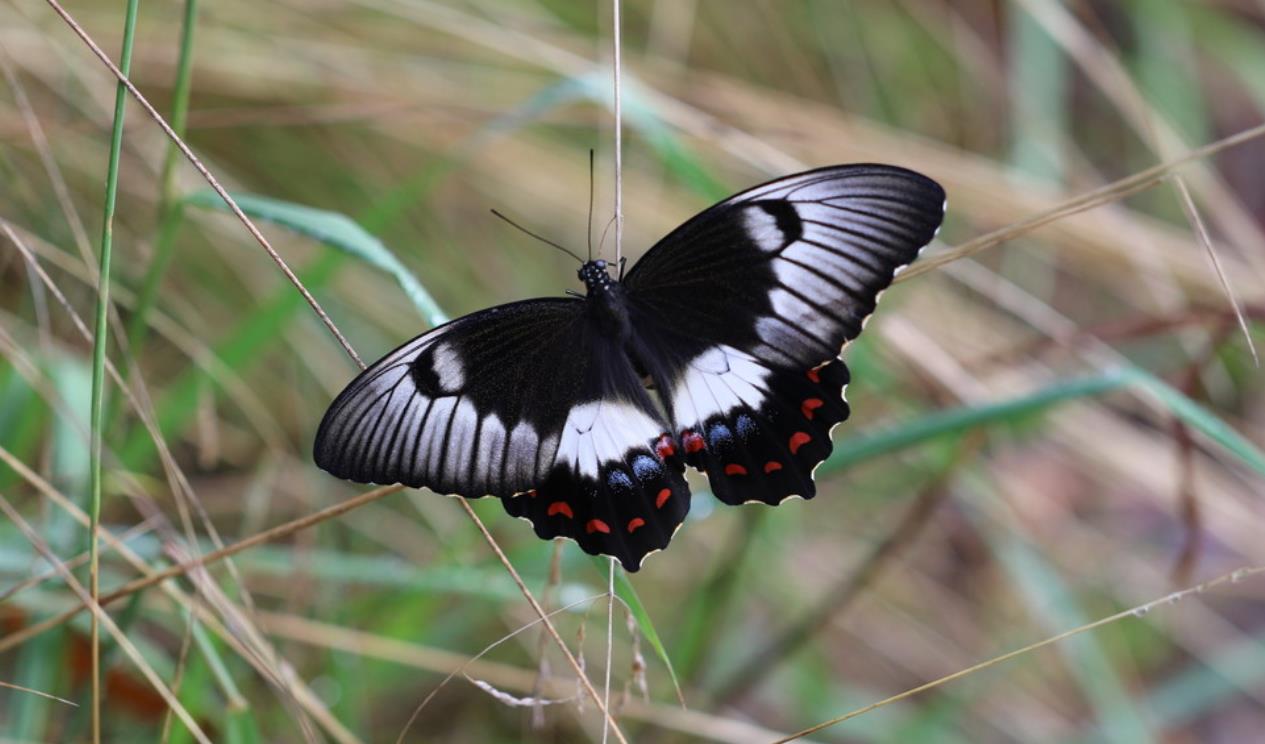
Despite being a swallowtail, which group derives its name from the distinctive tails on the hindwing, this characteristic is entirely absent.
Introduction
The Orchard Butterfly is not so popular with citrus farmers because of their caterpillars’ fruit diet.
Identification
Adult Orchard Butterflies are large, black and white butterflies common in Sydney’s suburban gardens from October to May. The undersides of their wings have striking colours, which are not always obvious when they fly.
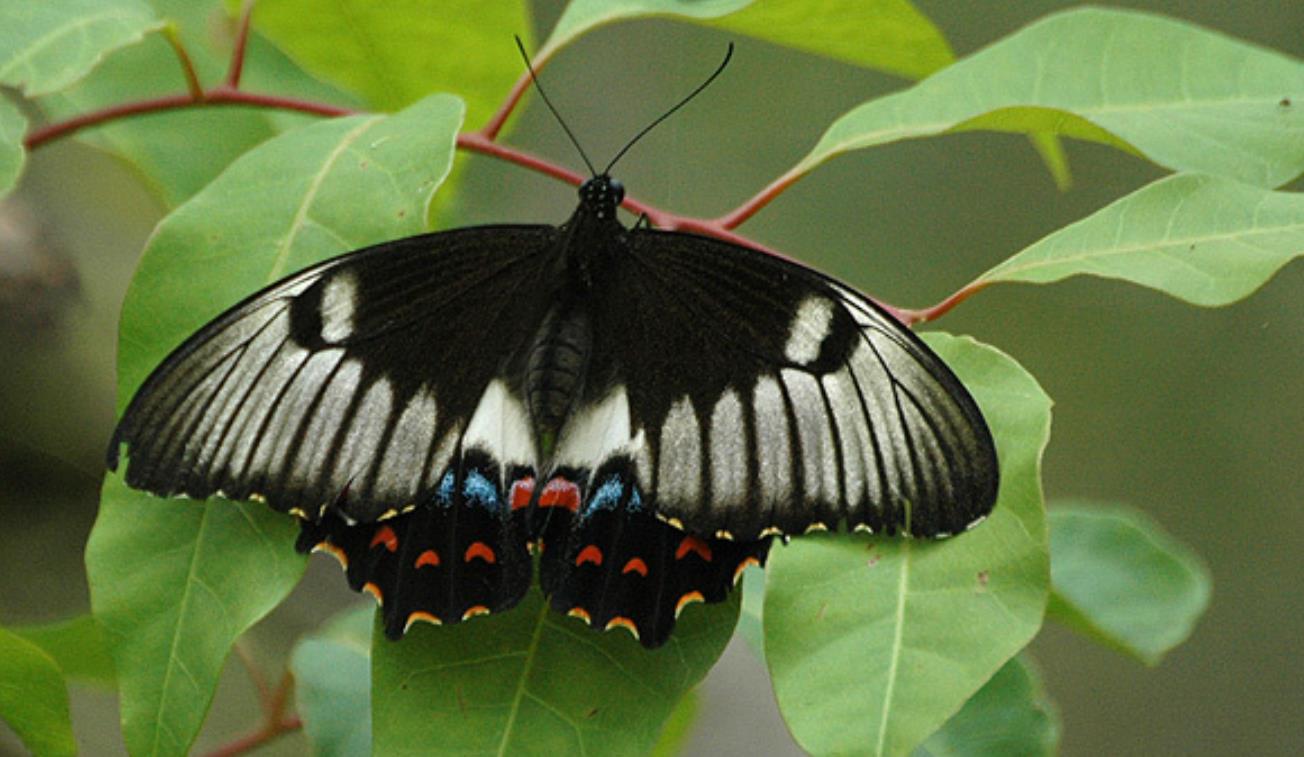
habitat
The Orchard Butterfly lives in urban areas, forests and woodlands.It prefers moist woodland and forest areas.Potential native and introduced hostplants occur throughout the state, but the butterfly and its early stages require warm humid and sheltered conditions to survive.
Distribution
The Orchard Butterfly is found in eastern Australia, from Queensland, New South Wales, Victoria and South Australia.
Feeding and diet
The diet of the Orchard Butterfly’s larvae includes cultivated citrus trees such as orange, lemon, lime, grapefruit and mandarin. They also feed on a number of native and other introduced plants.
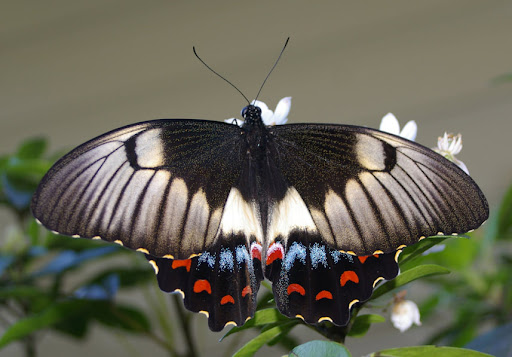
Other behaviours and adaptations
The caterpillars of the Orchard Butterfly have developed ingenious ways of protecting themselves from predators. During the early part of their life cycle they look like fresh bird droppings. As they grow, they develop spines and red tentacles that emit a foul smell.
Males can be territorial and will chase anything black and white that enters their territory – even Magpies.
One of the larger butterflies to occur in Australia, and the largest to be found in South Australia. It has quickly adapted to the introduced Citrus trees in Australia and can now be found in many areas where these trees are cultivated.
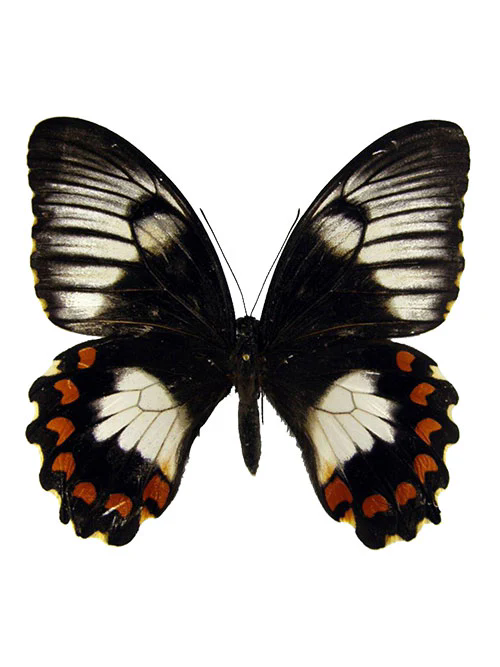
It has a reasonably fast and direct flapping flight in open areas, although the flight of the female is normally more subdued and slow as it goes about its business of egg laying. The butterflies always seem to be in flight, but are usually approachable, if only for a brief moment. Both sexes are often seen nectaring at flowers, particularly lantana, when they can be easily approached. The large size of this butterfly can sometimes bring out phobias in people so inflicted.
The Orchard Butterfly or Orchard Swallowtail, is one of the largest native butterflies – native to the east coast that is. In its native forest habitat the female lays eggs on the leaves of native orange and finger limes. However, in our backyard they have a penchant for the Tahitian lime and the Kaffir Lime – the latter was consequently stripped of about 90% of its leaves.
A week after they are laid the eggs hatch with young that resemble bird droppings of sorts. As they increase in size they turn green and are more difficult to spot. In about five weeks the caterpillar reaches its maximum size and molts to wrap itself in a hard pupal case that it attaches to a leaf or a stem or even structures in the garden. It looks rather impressive for its size compared to other pupas seen in our garden.
Normally it is ready to emerge in five to six weeks, but may take longer in our cooler climate. I’ve watched two this past autumn and winter just weathering the storms. Eventually, after months they disappeared some weeks ago which makes sense as they are said to emerge in spring to once again hover in our garden trying to track down our citrus trees.
The males are mainly black with cream and red spots whilst the females have red and blue spots with larger patches of white.
With a garden oasis featuring buddleia and butterfly bush and a couple of citrus trees we are usually the first point of call in the new season for these giants.

